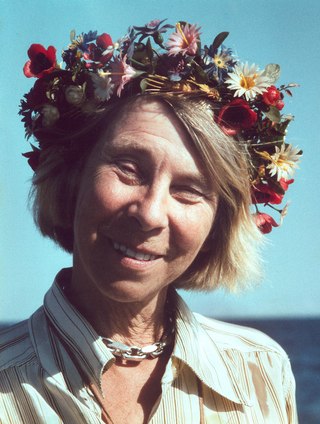
Tove Marika Jansson was a Swedish-speaking Finnish author, novelist, painter, illustrator and comic strip author. Brought up by artistic parents, Jansson studied art from 1930 to 1938 in Helsinki, Stockholm, and Paris. She held her first solo art exhibition in 1943. Over the same period, she penned short stories and articles for publication, and subsequently drew illustrations for book covers, advertisements, and postcards. She continued her work as an artist and writer for the rest of her life.

The Royal Swedish Academy of Fine Arts, commonly called the Royal Academy, is located in Stockholm, Sweden. An independent organization that promotes the development of painting, sculpture, architecture, and other fine arts, it is one of several Swedish Royal Academies. The Royal Institute of Art, an art school that was once an integral part of the academy, was broken out in 1978 as an independent entity directly under the supervision of the Ministry of Education.

Mårten Eskil Winge was a Swedish artist. He was a professor at the Royal Swedish Academy of Arts. He was associated with the Düsseldorf school of painting. His art was influenced by the Norse mythology themes also found in works by Nils Blommér (1816–1853) and Carl Wahlbom (1810-1858).

Isaac Grünewald was a Swedish-Jewish expressionist painter born in Stockholm. He was the leading and central name in the first generation of Swedish modernists from 1910 up until his death in 1946, in other words during almost his entire career spanning four decades. He was a highly productive painter as well as a writer and public speaker.

Hilma af Klint was a Swedish artist and mystic whose paintings are considered among the first abstract works known in Western art history. A considerable body of her work predates the first purely abstract compositions by Kandinsky, Malevich and Mondrian. She belonged to a group called "The Five", comprising a circle of women inspired by Theosophy, who shared a belief in the importance of trying to contact the so-called "High Masters"—often by way of séances. Her paintings, which sometimes resemble diagrams, were a visual representation of complex spiritual ideas.
Katarina Löfström is a Swedish artist. She attended the University College of Arts, Crafts and Design in Stockholm. Her work consists of animated videos, sculptural installations and sound. She is best known for short films such as "Hang Ten Sunset" (2000) and "Downhill" (2016), and sculptural works like "Open Source (Cinemascope)" (2018), which is permanently on view in Wanås Sculpture Park. She has also been commissioned for several public art works in Sweden and abroad.

Amalia Euphrosyne Lindegren was a Swedish artist and painter. She was a member of the Royal Swedish Academy of Arts (1856).
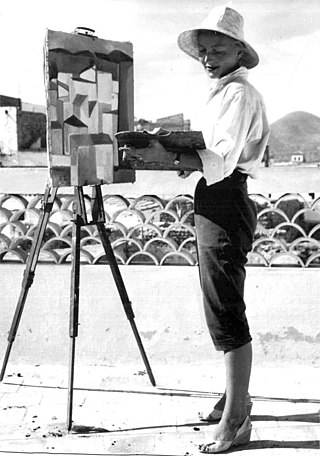
Sini Anita Kyllikki Snellman was a Finnish painter.
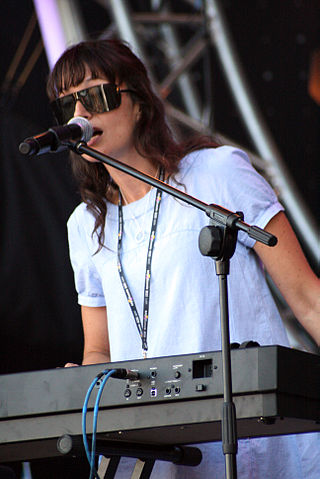
Anna Marina Schiptjenko is the only female member of the Swedish electronic pop group Bodies Without Organs. Her mother is Swedish and her father was a Ukrainian defector from the Soviet Union, thus her Ukrainian surname.
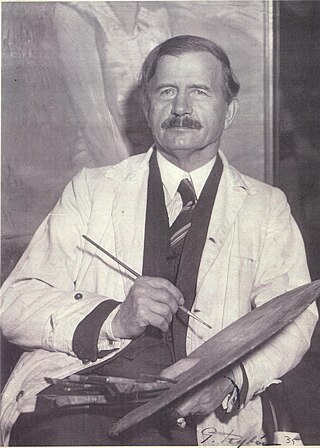
David August Wallin was a Swedish artist. In 1932 he won an Olympic Gold Medal in the art competitions of the Olympic Games in Los Angeles for his oil painting "At the Seaside of Arild".
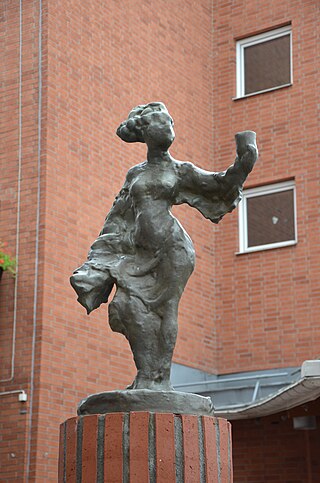
Peter Dahl was a Swedish painter, sculptor, and printmaker.

Eva Fredrika Bonnier was a Swedish painter and philanthropist.

Pehr Hörberg was a Swedish artist, painter and musician. In 1769 he married the maid Maria Eriksdotter and they had three sons.

Aurora Valeria Albertina Valerius, known as Bertha, was a Swedish photographer and painter.

Ruth "Ester" Elisabet Ellqvist was a Swedish artist, model and wife of John Bauer, who was a painter and illustrator. She studied at the Royal Swedish Academy of Arts and spent one year studying art in southern Germany and Italy with her husband. She died in 1918 with her husband and three-year-old son when the boat that they sailed on sank, killing all 24 people on board.

Bo Staffan Scheja is a Swedish pianist and professor. Scheja started studying piano at the age of nine and made his concert debut at the age of 14 with the Sveriges Radios symfoniorkester. He also performed with the Royal Stockholm Philharmonic Orchestra. He studied at the Royal College of Music in Stockholm 1964–1969 and 1969–1972 at the Juilliard School in New York with pianists Rosina Lhévinne, Ilona Kabos and Ania Dorfmann.

Louise "Ise" Morssing was a Swedish visual artist, sculptor, scenographer and theater director.
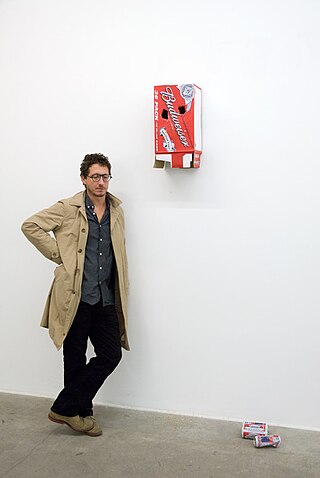
Tony Matelli is an American sculptor, who has gained recognition for his hyper-realistic artworks, which utilize various techniques and materials. One of his best known works is Sleepwalker.

Mathilda Kristina (Kerstin) Cardon (1843–1924) was a Swedish painter and art teacher. One of the first 18 women to be admitted to the women's section of the Royal Swedish Academy of Fine Arts, she went on to produce portraits and still lifes in oils and pastels. In 1875, she began teaching at the Women's Teacher Training Seminary and opened her own painting school in central Stockholm. A popular high-society portrait painter, she produced three portraits of King Oscar II.

Konstnärsförbundet was an association of Swedish artists founded in 1886 in opposition to the Royal Swedish Academy of Fine Arts.


















